Aloha all,
I've struggled to build a legend for a mix/match of time series data I'm making. Here is some code:
My understanding is that I need to somehow clean my data and put it all in the same data frame, but all of the time series don't line up very well. Some is at 15 minutes, other one hour. Is there any way to force a legend for these datasets? I don't know what else to post here - since the 5 datasets are quite large.
q<- ggplot(subset(cr200_Auwai1, timedate>startd & timedate<endd), aes(timedate, Turb_SS)) +
geom_point(color="coral4")+
geom_point(data=subset(dsloi_wl, timedate>startd & timedate<endd), aes(timedate, level), color="blue")+
#geom_point(data=subset(flow_data, mdate>startd & mdate<endd), aes(as.POSIXct(mdate), flow_cfs*1000), color="red")+
geom_point(data=subset(cr300_Wai1, timedate>startd & timedate<endd), aes(timedate, Lvl_m*1000), color="forestgreen", size=1)+ #aquamarine3
geom_point(data=subset(cr300_Wai1, timedate>startd & timedate<endd), aes(timedate, Turb_SS), color="orange")+
#geom_point(data=subset(hihimanu_wl, timedate>startd & timedate<endd), aes(timedate, level), color="azure4", size=0.1)+
#geom_point(data=subset(rain_data, timedate>startd & timedate<endd), aes(timedate, rainmm), color="red",size=5)+
geom_point(data=subset(haptuk_ysi, datetime>startd & datetime<endd), aes(datetime, Turb), color="pink")+
#scale_x_date(breaks=date_breaks("month"), labels = date_format("%b-%y"))+
xlab("Date")+
ylab("Turbidity (NTU) and Water Level (mm)")+
coord_cartesian(ylim=c(0, 1500))+
theme_bw()+
theme(axis.text=element_text(size=14),
axis.title=element_text(size=16,face="bold"),
legend.justification = c(1, 1),
legend.position = c(1, 1),
legend.title=element_text(size=14),
legend.text=element_text(size=12))
Here is a sample of two of the datasets: Note that the times don't line up at all... since I'm mixing sources.
dsloi_wl:structure(list(ReceptionTime = c(1533895414.1134, 1533895414.1733, 1533895414.19397, 1533895414.20708, 1533895414.22283, 1533895414.23634, 1533895414.25135, 1533895414.26387, 1533895414.27653, 1533895414.29126, 1533896013.68755, 1533896013.7638, 1533896013.79232, 1533896013.80917, 1533896013.82312, 1533896013.83648, 1533896013.84988, 1533896013.8648, 1533896013.87724, 1533896013.8894), d2w = c(776.7, 789.7, 790.2, 777.1, 777.2, 777.7, 778.4, 793.4, 779.6, 794.1, 819.9, 780.7, 794.1, 806.9, 781.9, 781.9, 782.7, 782.8, 783.1, 783.4), timedate = structure(c(1533895414.1134, 1533895414.1733, 1533895414.19397, 1533895414.20708, 1533895414.22283, 1533895414.23634, 1533895414.25135, 1533895414.26387, 1533895414.27653, 1533895414.29126, 1533896013.68755, 1533896013.7638, 1533896013.79232, 1533896013.80917, 1533896013.82312, 1533896013.83648, 1533896013.84988, 1533896013.8648, 1533896013.87724, 1533896013.8894), class = c("POSIXct", "POSIXt"), tzone = ""), level = c(723.3, 710.3, 709.8, 722.9, 722.8, 722.3, 721.6, 706.6, 720.4, 705.9, 680.1, 719.3, 705.9, 693.1, 718.1, 718.1, 717.3, 717.2, 716.9, 716.6)), .Names = c("ReceptionTime", "d2w", "timedate", "level"), row.names = c(NA, 20L), class = "data.frame")
CR300_Wai1
structure(list(RECORD = 73027:73046, Temp_C = c(24.62861, 24.62332, 24.61533, 24.60857, 24.60189, 24.59733, 24.59068, 24.58404, 24.57869, 24.57327, 24.56781, 24.5606, 24.55551, 24.55218, 24.54648, 24.5416, 24.5358, 24.5319, 24.52781, 24.52294), Turb_BS = c(94.50522, 88.65939, 109.354, 57.71527, 134.1903, 46.37191, 78.17719, 52.22319, 58.07111, 96.95719, 51.47488, 44.65616, 70.43825, 99.58217, 93.68374, 87.4787, 175.5395, 167.6757, 110.8119, 132.5971), Turb_SS = c(36.63349, 34.31228, 37.02223, 32.97258, 36.68553, 33.82083, 37.43391, 33.43639, 31.17306, 33.6327, 34.69954, 30.99891, 34.69988, 33.64369, 32.54948, 32.1177, 32.86558, 48.97706, 30.65004, 33.71646), Temp_C_2 = c(24.9014, 24.89474, 24.88837, 24.88279, 24.87574, 24.86852, 24.86357, 24.85751, 24.85236, 24.84759, 24.84091, 24.83577, 24.83192, 24.82713, 24.8229, 24.81832, 24.81237, 24.80821, 24.8051, 24.80015), WD_OBS = c(0L, 0L, 0L, 0L, 0L, 0L, 0L, 0L, 0L, 0L, 0L, 0L, 0L, 0L, 0L, 0L, 0L, 0L, 0L, 0L), Lvl_m = c(0.6907353, 0.6905226, 0.6896195, 0.6890779, 0.6881586, 0.6878724, 0.6862501, 0.6848835, 0.6844589, 0.6837503, 0.6836612, 0.6831629, 0.6821692, 0.6812283, 0.6799452, 0.6791196, 0.6782504, 0.6772775, 0.6763596, 0.6755115), timedate = structure(c(1533895500, 1533895800, 1533896100, 1533896400, 1533896700, 1533897000, 1533897300, 1533897600, 1533897900, 1533898200, 1533898500, 1533898800, 1533899100, 1533899400, 1533899700, 1533900000, 1533900300, 1533900600, 1533900900, 1533901200), class = c("POSIXct", "POSIXt"), tzone = "")), .Names = c("RECORD", "Temp_C", "Turb_BS", "Turb_SS", "Temp_C_2", "WD_OBS", "Lvl_m", "timedate"), row.names = c(NA, 20L), class = "data.frame")



